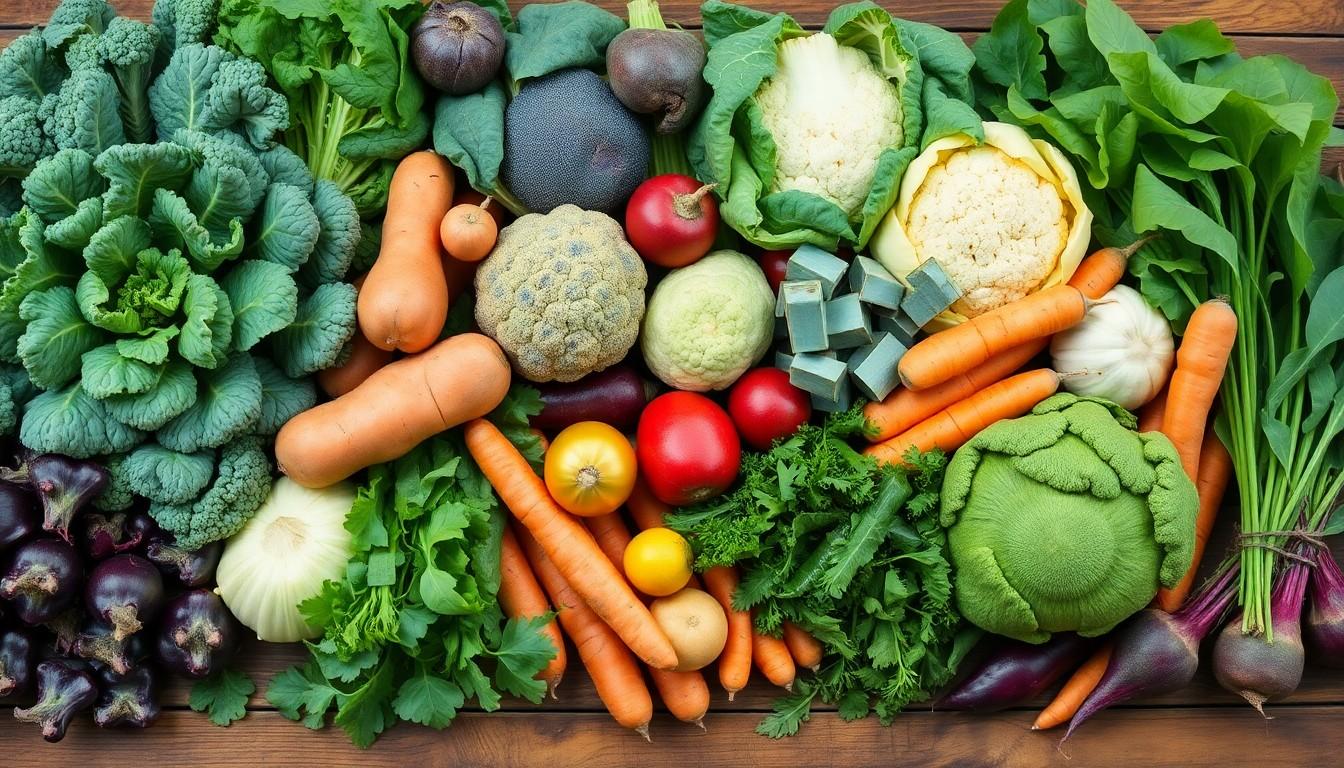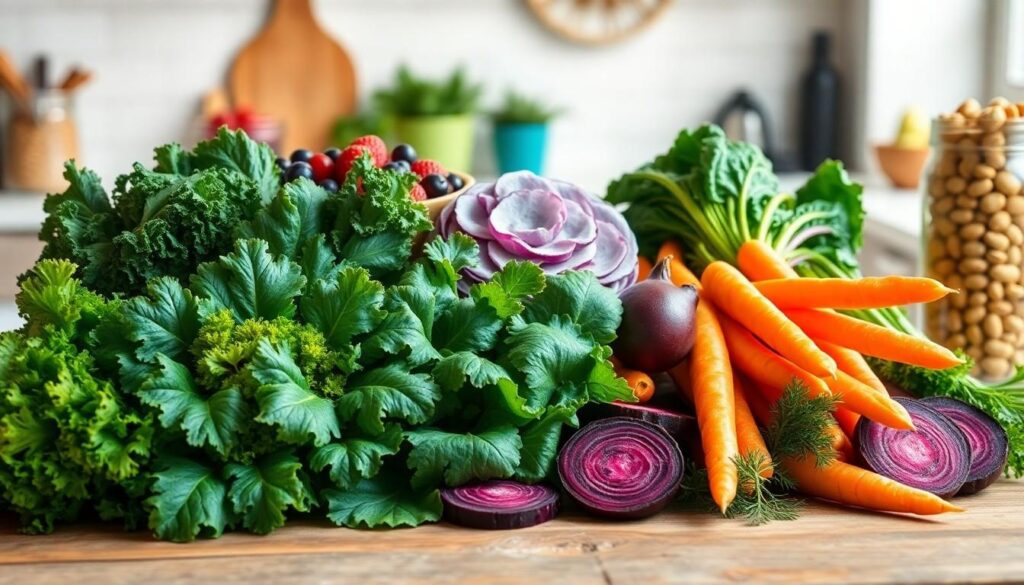Looking for a way to supercharge your health without breaking the bank? The secret lies in stocking your pantry with nutrient-packed staples that pack a serious wellness punch. These everyday heroes might not wear capes but they’re ready to transform your diet from meh to magnificent.
Staple Healthiest Foods on Thinksano.com
Healthy foods contain essential nutrients that support bodily functions while minimizing processed ingredients or harmful additives. The nutritional value of food depends on several key factors including nutrient density macro composition.
Key Nutritional Factors to Consider
A food’s health value stems from its nutrient profile including vitamins minerals fiber protein content. Foods with high nutrient density provide substantial nutritional benefits in relation to their calorie content. Here’s what makes food nutritionally valuable:
-
- Macronutrient Balance: Appropriate ratios of proteins carbohydrates fats
-
- Micronutrient Content: Essential vitamins minerals like vitamin D iron calcium
-
- Fiber Content: Both soluble insoluble fiber for digestive health
-
- Antioxidant Properties: Compounds that fight oxidative stress
-
- Bioavailability: How effectively the body absorbs nutrients
-
- Low Processing: Minimal artificial additives preservatives refined sugars
The Role of Whole Foods in Diet
Whole foods form the foundation of a nutritious diet by providing nutrients in their natural state. These unprocessed or minimally processed foods deliver:
| Benefit | Impact |
|---|---|
| Nutrient Retention | 90-100% of natural nutrients preserved |
| Fiber Content | 25-35g daily requirement met easily |
| Antioxidant Levels | 2-3x higher than processed alternatives |
Natural foods contain beneficial compounds that work synergistically together. The combination of nutrients in whole foods creates more powerful health effects than isolated nutrients from supplements or fortified processed foods.
Essential Healthy Vegetables

Vegetables form the cornerstone of a nutrient-dense diet, providing essential vitamins, minerals, fiber, and antioxidants. The most beneficial vegetables fall into distinct categories, each offering unique nutritional advantages.
Leafy Greens and Cruciferous Vegetables
Leafy greens pack maximum nutrition with minimal calories, containing high concentrations of vitamins A, C, K, and folate. Dark leafy varieties like kale, spinach, Swiss chard contain 2-3 times more iron than lighter varieties. Cruciferous vegetables including broccoli, cauliflower, Brussels sprouts contain glucosinolates that support cellular health.
| Vegetable | Key Nutrients | Daily Value per Cup |
|---|---|---|
| Kale | Vitamin K | 684% |
| Spinach | Iron | 36% |
| Broccoli | Vitamin C | 85% |
Root Vegetables and Their Benefits
Root vegetables deliver sustained energy through complex carbohydrates while providing essential minerals from the soil. Sweet potatoes contain 400% of the daily vitamin A requirement per medium potato. Carrots provide beta carotene that supports eye health. Beets boost nitric oxide levels improving blood flow by 20%.
| Root Vegetable | Main Benefit | Storage Life |
|---|---|---|
| Sweet Potato | Vitamin A | 3-5 weeks |
| Carrots | Beta Carotene | 4-5 weeks |
| Beets | Nitric Oxide | 2-3 weeks |
Powerful Protein Sources
Protein sources form essential building blocks for muscle maintenance growth cellular repair. The right combination of plant-based and animal proteins provides complete nutrition while supporting diverse dietary preferences.
Plant-Based Protein Options
Plant proteins deliver essential amino acids alongside fiber antioxidants minerals. Lentils contain 18g of protein per cup plus 15g of fiber making them a nutrient-dense choice. Quinoa provides all nine essential amino acids with 8g of complete protein per cooked cup. Black beans pack 15g of protein per cup while chickpeas offer 14g plus beneficial prebiotics. Additional protein-rich plant sources include:
-
- Edamame: 17g protein per cup serving
-
- Hemp seeds: 10g protein per 3 tablespoons
-
- Tempeh: 31g protein per cup
-
- Almonds: 6g protein per ounce
-
- Nutritional yeast: 8g protein per quarter cup
Quality Animal Proteins
| Protein Source | Protein (g) | Serving Size |
|---|---|---|
| Greek Yogurt | 23 | 1 cup |
| Chicken Breast | 26 | 3 oz |
| Tuna | 20 | 3 oz |
| Cottage Cheese | 24 | 1 cup |
| Turkey | 25 | 3 oz |
Wholesome Grains and Legumes
Grains and legumes form essential components of a well-stocked pantry, delivering sustained energy through complex carbohydrates and plant-based proteins. These nutritional powerhouses provide essential minerals, vitamins, and fiber while remaining shelf-stable for extended periods.
Ancient Grains to Include
Ancient grains contain higher protein content and nutrient density compared to modern wheat varieties. Quinoa packs 8g of complete protein per cup, plus iron, magnesium, and zinc. Amaranth offers 9g of protein per cup with lysine, an amino acid often lacking in grains. Teff delivers 10g of protein per cup plus 35% daily iron needs. Buckwheat contains rutin for heart health plus resistant starch for gut benefits. A rotation of these grains provides diverse nutrients:
| Grain | Protein (g/cup) | Notable Nutrients |
|---|---|---|
| Quinoa | 8 | Iron, Magnesium, Zinc |
| Amaranth | 9 | Lysine, Calcium |
| Teff | 10 | Iron, Calcium |
| Buckwheat | 6 | Rutin, Fiber |
Nutritious Bean Varieties
| Bean Type | Protein (g/cup) | Fiber (g/cup) |
|---|---|---|
| Black Beans | 15 | 15 |
| Navy Beans | 15 | 19 |
| Chickpeas | 14 | 12 |
| Lentils | 18 | 16 |
Healthy Fats and Superfoods
Healthy fats supply essential nutrients for optimal brain function, hormone production and cellular health. These nutrient-dense foods contain omega-3 fatty acids, vitamins and minerals that support overall wellness.
Nuts and Seeds
Raw nuts and seeds pack concentrated nutrients in small portions. A 1-ounce serving of almonds provides 6g protein, 14g healthy fats and 37% daily vitamin E. Popular nutrient-rich options include:
-
- Walnuts: Rich in omega-3s and antioxidants
-
- Chia seeds: 11g fiber and 4g protein per ounce
-
- Flaxseeds: High in lignans and alpha-linolenic acid
-
- Pumpkin seeds: Contains 7g protein and 37% daily magnesium
-
- Brazil nuts: One nut provides 137% daily selenium
-
- Hemp seeds: Complete protein with all essential amino acids
Beneficial Oils and Avocados
-
- Extra virgin olive oil: 73% monounsaturated fats
-
- Avocados: 15g healthy fats and 10g fiber per fruit
-
- MCT oil: Rapidly absorbed for quick energy
-
- Coconut oil: Contains antimicrobial lauric acid
-
- Avocado oil: High smoke point for cooking (520°F)
| Oil Type | Smoke Point | Key Benefits |
|---|---|---|
| Extra Virgin Olive Oil | 375°F | Heart health, antioxidants |
| Avocado Oil | 520°F | High-heat cooking, vitamin E |
| Coconut Oil | 350°F | Medium-chain triglycerides |
Nutrient-Dense Fruits
Fruits provide essential vitamins minerals antioxidants in a naturally sweet package. These colorful plant foods support immune function cellular health digestive wellness through their diverse nutrient profiles.
Berries and Antioxidant-Rich Options
Berries pack the highest antioxidant content among fruits with polyphenols that combat oxidative stress. Blueberries contain 9,019 antioxidant units per cup making them powerful defenders against cellular damage. Blackberries deliver 7.7g of fiber per cup while providing anthocyanins that support brain function. Strawberries offer 85mg of vitamin C per cup meeting 94% of daily needs. Raspberries contain ellagic acid which studies link to reduced cancer risk.
| Berry Type | Antioxidant Units/Cup | Key Nutrients |
|---|---|---|
| Blueberries | 9,019 | Anthocyanins vitamin K |
| Blackberries | 5,347 | Fiber vitamin C |
| Strawberries | 4,302 | Vitamin C folate |
| Raspberries | 4,882 | Ellagic acid fiber |
Tropical Fruit Benefits
Tropical fruits deliver unique nutrients that support multiple aspects of health. Mangoes provide 67% daily vitamin C plus beta carotene for immune system support. Pineapples contain bromelain enzymes that reduce inflammation enhance protein digestion. Papayas offer 157% daily vitamin C per cup along with papain enzymes for digestive health. Passion fruit delivers 25g fiber per cup supporting gut health blood sugar control.
| Tropical Fruit | % Daily Vitamin C | Notable Compounds |
|---|---|---|
| Papaya | 157% | Papain enzymes |
| Mango | 67% | Beta carotene |
| Pineapple | 79% | Bromelain |
| Passion Fruit | 42% | High fiber |
Building a Balanced Diet
A balanced diet combines essential nutrients in optimal proportions to support overall health. The right combination of foods maximizes nutrient absorption while providing sustained energy throughout the day.
Proper Food Combinations
Strategic food pairing enhances nutrient absorption and digestive efficiency. Iron-rich foods like spinach pair with vitamin C sources such as citrus fruits to increase iron absorption by 300%. Healthy fats complement fat-soluble vitamins found in vegetables – adding avocado to a salad increases vitamin A absorption by 400%. Protein combinations create complete amino acid profiles: rice with beans quinoa with lentils tofu with brown rice. Anti-nutrient foods like oxalates in spinach reduce mineral absorption when paired with calcium-rich foods. Timing matters – consuming protein within 30 minutes after exercise optimizes muscle recovery.
Meal Planning Strategies
Effective meal planning starts with a structured approach to portion control and nutrient timing. A balanced plate contains 50% vegetables 25% lean protein 25% complex carbohydrates. Pre-portioning meals into containers saves 3-4 hours weekly on food preparation. Batch cooking grains beans proteins on weekends provides ready-to-eat components for 5-7 days. Color-coding ingredients ensures variety: green vegetables orange fruits purple antioxidant-rich foods. Strategic snack placement between meals maintains stable blood sugar levels. Morning meals emphasize protein fiber while evening meals focus on complex carbohydrates magnesium-rich foods.
| Meal Component | Portion Size | Daily Servings |
|---|---|---|
| Vegetables | 2 cups | 4-5 |
| Lean Protein | 4-6 oz | 3 |
| Complex Carbs | 1/2 cup | 3 |
| Healthy Fats | 1 tbsp | 2-3 |
Healthiest Foods
Building a healthy pantry with nutrient-rich staples is the foundation of a sustainable and nourishing diet. These everyday ingredients work together to provide essential nutrients vitamins minerals and antioxidants that support overall wellness.
By focusing on whole foods incorporating diverse protein sources and embracing healthy fats anyone can create a balanced nutritious diet. The key lies in smart food combinations proper storage and thoughtful meal planning.
Remember that the healthiest foods are often the simplest ones found in nature. Stocking up on these wholesome staples makes it easier to maintain healthy eating habits while supporting long-term health goals.

